To successfully convince your boss that inbound marketing is a profitable way forward, you need to...
Originally written: Apr 2016
Updated: Nov 2019
To successfully convince your boss that inbound marketing is a profitable way forward, you need to show them the benefits of adopting inbound. So how do you answer the question ‘Does inbound marketing really work?’ The answer is statistical proof.

We've got everything you need to convince them that inbound marketing works. Use this and other helpful links to further their own knowledge about it.
-
Inbound is the main marketing strategy for companies with less than 200 people.
-
Inbound marketing is seen as an effective approach to marketing - especially for niche industries.
Benefits of inbound marketing
In the UK, inbound marketing is growing rapidly. The inbound methodology originates in the US but we've seen how UK companies are keen to adopt this marketing concept into their strategy.
A lot of people ask ‘what is inbound marketing?’, but forget to ask a similarly important question - what are the benefits?
-
On average, businesses spend around £16k less on inbound practices versus tradition outbound practices.
-
Creating buyer personas improves your understanding of your customers and helps you to target them with relevant content.
-
54% more leads come from inbound sources compared to outbound.
-
Inbound leads have a close rate of 14.6%. Outbound has a rate of 1.7%.
We've collected all the facts that prove inbound marketing works. Most of our statistics are from HubSpot's State of Inbound, a report where 6,200+ people from 99 countries contributed their experiences with inbound marketing.
Inbound is a globally-used marketing methodology
HubSpot's State of Inbound report discovered many businesses believe inbound gives them better opportunities compared to outbound. Globally, over 70% of organisations surveyed use inbound practices as their primary approach to marketing.
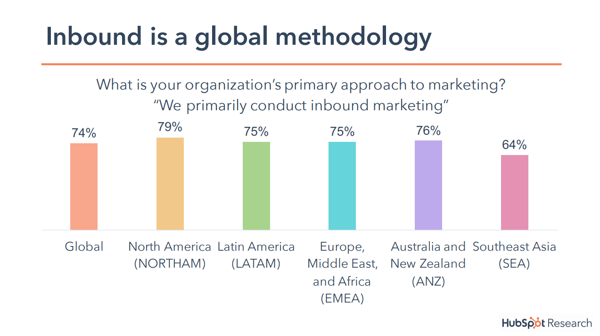
Inbound offers higher ROI compared to outbound
53% of the companies interviewed said that inbound tactics help them to achieve higher ROI, compared to only 16% from outbound techniques. It's shown that small to large businesses have seen an increase in their ROI with inbound marketing.
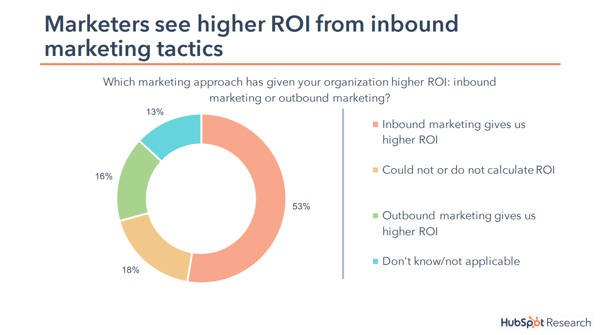
Inbound is the main marketing strategy for companies with less than 200 people
Large companies still prefer outbound because they have the finances to support costly outbound strategies. While big businesses are still working on incorporating inbound into their marketing, it's clear inbound is taking over as a main strategy for many smaller businesses.
This also means you don’t need to have a huge company to practice and benefit from inbound marketing techniques. Although, that doesn't mean enterprise companies can't adopt inbound strategies to succeed.
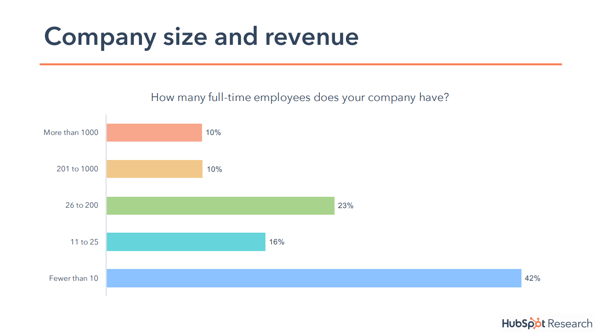
Inbound marketing is seen as an effective approach to marketing - especially for niche industries
From HubSpot's survey, 6,200 people took part and 75% said the inbound approach was central to their marketing.
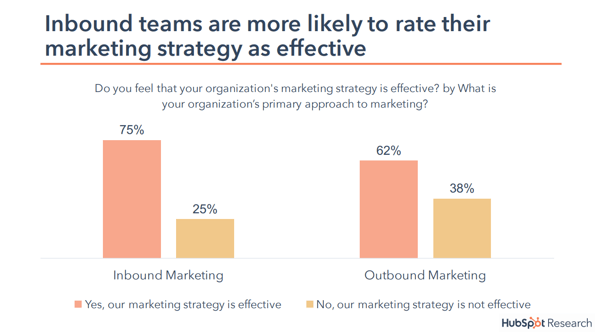
Inbound is critical for businesses who specialise in a specific niche. For example, software and tech companies benefit from inbound techniques because they can create premium content to attract their ideal customers. But don’t get me wrong, inbound works for any business.
Inbound boosts lead generation
According to marketers, inbound practices generate 60% of high-quality leads, whereas outbound practices only produce 18%.
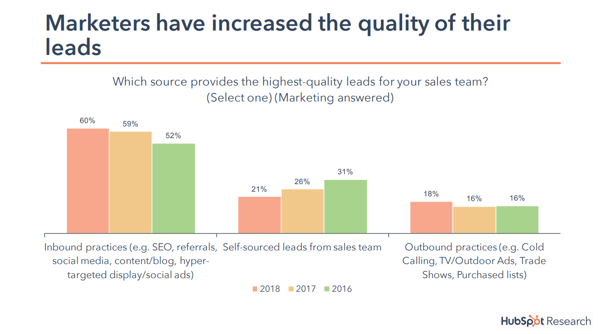
Inbound marketing has proven to be more successful at generating leads compared to outbound because it focuses specifically on ideal customers. All content and marketing strategies are designed with the buyer’s journey in mind.
The inbound methodology has proven to help sales teams because they can contact leads when they are ready to buy rather than resorting to cold calling. Inbound marketing can help turn websites into lead generation machines.
Many businesses who currently use inbound strategies are using this methodology because their main priority is getting more leads.
The facts about inbound
We've seen how inbound strategies have worked in real-life situations. But we understand that fact alone will not get your boss on board the 'inbound' train.
It may be difficult to separate and compartmentalise inbound and outbound techniques as separate ideologies. It might be even harder to judge which one is the appropriate route for you.
Of the companies surveyed in the HubSpot report, 61% said that growing their SEO/organic presence was a top marketing priority. 55% said that blog and content creation was also one of their main objectives.
Inbound helps to enhance both these processes by basing its methodology on up-to-date SEO practices and using them to create trustworthy, relevant and memorable content for customers to interact with and be influenced by.
Explore what inbound marketing looks like in action
If you need more information when convincing your boss on the benefits of inbound, you can use our guide. ‘A Year in Inbound’ is a handy slidedeck that will take you through the processes and results of 12 months when adopting the inbound approach. It’s full of information that will answer those all important questions you may have along the way.
Click the link below to get your free copy.


